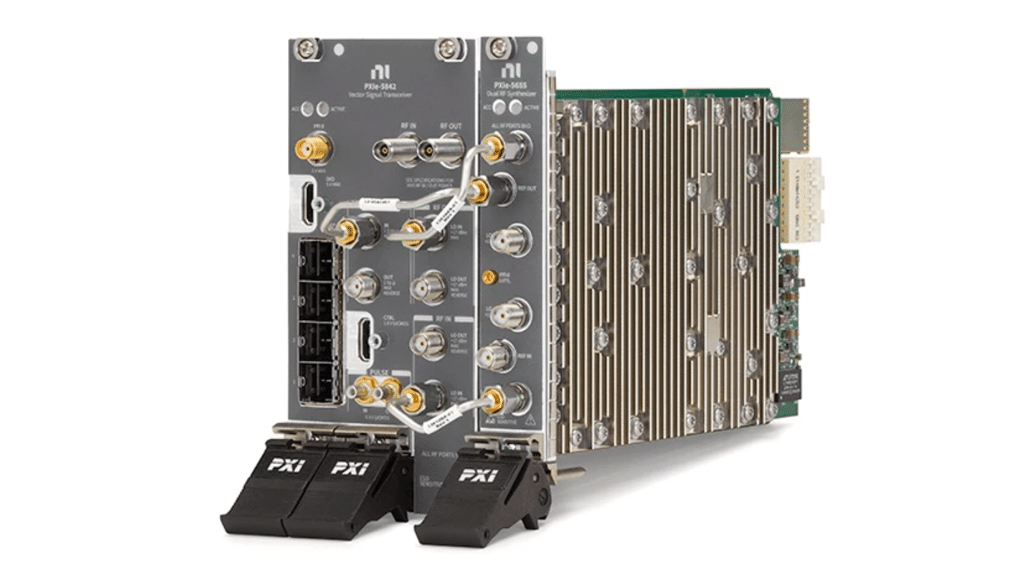NI, an industry leader in automated wireless test and measurement, today announced new options and extended capabilities for its third generation PXI Vector Signal Transceiver (VST), the PXIe-5842. Combined with NI’s software ecosystem, the PXIe-5842 is a versatile tool that can be used to test and validate products in aerospace and defense applications while supporting traditional RF capabilities such as spectrum analysis, signal analysis, and signal generation.
Demand for increased RF bandwidth, frequency agility, dynamic range, and digital data movement is pushing traditional instrumentation beyond its current capabilities. NI’s VST3, the PXIe-5842, is accelerating the development of the next generation of digitally integrated active Electronically Scanned Arrays (ESA) for radar, SatCom, and electronic warfare applications as well as commercial wireless applications such as Wi-Fi 7, 6G, Ultra-wideband (UWB) and Bluetooth.
The PXIe-5842 delivers precise control over signal parameters and real-time analysis with its extended frequency coverage from 30 MHz to 26.5 GHz. Enhancements also include up to 2 GHz of instantaneous RF bandwidth and upgraded Local Oscillator (LO) offset mode with improved average noise density. This version now enables digital and analog pulse modulation capabilities, and its 16-lane high-speed serial interface enables low-latency digital I/Q data streaming at rates up to the full 2 GHz IBW of the instrument, with futureproofing to 4 GHz. When combined with PXI-based FPGA co-processors from NI, the third generation VST can emulate RF environments or other RF devices for system level tests. These new capabilities build upon the flexibility and versatility of the PXIe-5842, are useful for generic RF testing and are particularly suitable for aerospace and defense applications.
